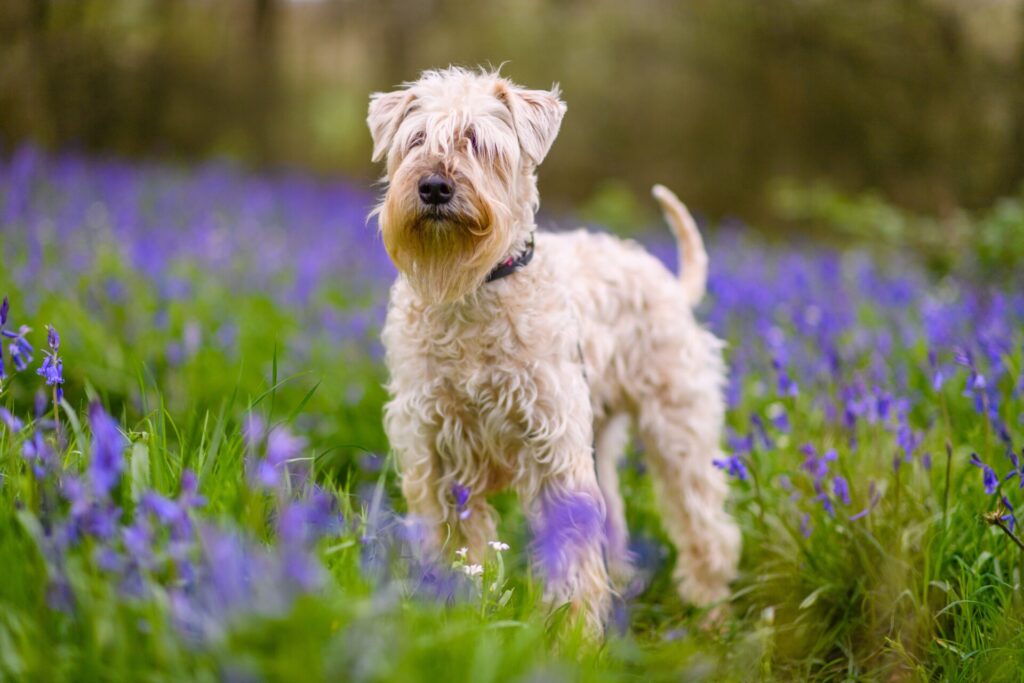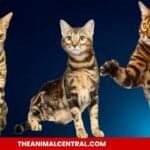If you suffer from allergies but still want a furry companion, hypoallergenic dog breeds might be the solution for you. These breeds are known to produce less dander and shed less hair, which makes them less likely to trigger allergic reactions. In this article, we will introduce you to the most popular hypoallergenic dog breeds and provide tips on how to care for them.
What is Hypoallergenic Dog Breeds?
Hypoallergenic dog breeds are dogs that are less likely to trigger allergic reactions in people with allergies. These breeds produce less dander, a tiny skin particle that is shed by animals and can cause allergies. They also shed less hair, which reduces the amount of allergens that can accumulate in the environment. However, it’s important to note that no dog breed is completely hypoallergenic, and some people with severe allergies may still react to these dogs.
Characteristics of Hypoallergenic Dog Breeds
Hypoallergenic dog breeds have several characteristics that make them less likely to trigger allergies. These breeds usually have a non-shedding coat or a coat that sheds very little. They also have less dander and saliva, which can also contain allergens. Hypoallergenic dogs also tend to be smaller in size, which means they produce less dander overall.
Popular Hypoallergenic Dog Breeds
There are several popular hypoallergenic dog breeds that you might consider if you’re looking for a furry companion that won’t trigger your allergies. Here are 15 of the most popular hypoallergenic dog breeds:
Poodle

Poodles are one of the most popular hypoallergenic dog breeds. They have curly, non-shedding fur that produces less dander than other breeds. They come in various sizes, including toy, miniature, and standard.
Bichon Frise

Bichon Frises have a curly, non-shedding coat that produces very little dander. They are also known for their friendly and outgoing personalities.
Shih Tzu

Shih Tzus have a long, silky coat that doesn’t shed much hair. They produce less dander than other breeds and are known for their affectionate personalities.
Yorkshire Terrier

Yorkshire Terriers have a silky, non-shedding coat that produces very little dander. They are small in size and make great indoor pets.
Maltese

Maltese have a long, white, non-shedding coat that produces very little dander. They are small in size and are known for their playful personalities.
Portuguese Water Dog

Portuguese Water Dogs have a curly, non-shedding coat that produces very little dander. They are also very intelligent and trainable.
Basenji

Basenjis have a short, fine coat that doesn’t shed much hair. They produce less dander than other breeds and are known for their independent and curious personalities.
Chinese Crested

Chinese Cresteds are hairless or have a soft, furry coat that doesn’t shed much hair. They produce very little dander and are often recommended for people with allergies.
Kerry Blue Terrier

Kerry Blue Terriers have a soft, wavy coat that doesn’t shed much hair. They produce less dander than other breeds and are known for their loyal and playful personalities.
Schnauzer

Schnauzers have a wiry, non-shedding coat that produces very little dander. They come in different sizes, including miniature, standard, and giant.
Samoyed

Samoyeds have a thick, fluffy coat that sheds seasonally. However, they produce less dander than other breeds and are known for their friendly and outgoing personalities.
Whippet

Whippets have a short, smooth coat that doesn’t shed much hair. They produce less dander than other breeds and are often recommended for people with allergies.
Afghan Hound

Afghan Hounds have a long, silky coat that sheds very little hair. They produce less dander than other breeds and are known for their regal and elegant appearance.
Irish Water Spaniel

Irish Water Spaniels have a curly, non-shedding coat that produces very little dander. They are also known for their excellent swimming abilities.
Soft Coated Wheaten Terrier

Soft Coated Wheaten Terriers have a soft, wavy coat that doesn’t shed much hair. They produce less dander than other breeds and are often recommended for people with allergies.
How to Care for Hypoallergenic Dog Breeds
While hypoallergenic dog breeds may be less likely to trigger allergies, they still require proper care to ensure their health and happiness. Here are some tips on how to care for hypoallergenic dog breeds:
Grooming
Hypoallergenic dog breeds require regular grooming to keep their coat healthy and minimize shedding. Brushing and bathing are important to remove any loose hair and dander.
Exercise
All dogs need regular exercise to maintain their physical and mental health. Hypoallergenic dog breeds are no exception, and they should have daily exercise to keep them happy and healthy.
Diet
A balanced and nutritious diet is essential for all dogs, including hypoallergenic breeds. Consult with your veterinarian to determine the best diet for your dog’s needs.
Allergies
If you or someone in your household has allergies, it’s important to manage them properly. This may include using allergy medication or limiting exposure to allergens.
Conclusion
Hypoallergenic dog breeds can be a great option for people with allergies who want a furry companion. While no dog breed is completely hypoallergenic, these breeds produce less dander and shed less hair, which reduces the likelihood of triggering allergies. With proper care and management, these dogs can provide years of love and companionship.
FAQs
Can hypoallergenic dogs still cause allergies?
Yes, although hypoallergenic dog breeds produce less dander and shed less hair, they are not completely allergen-free. People with severe allergies may still experience symptoms around hypoallergenic dogs.
Are hypoallergenic dogs more expensive?
Hypoallergenic dogs may be more expensive than other breeds due to their rarity and popularity among people with allergies.
Do hypoallergenic dogs require less grooming?
No, hypoallergenic dogs still require regular grooming to maintain their coat and minimize shedding. However, they may produce less dander than other breeds.
Can hypoallergenic dogs be trained?
Yes, hypoallergenic dogs can be trained just like any other breed. They are often intelligent and eager to please their owners.
How much exercise do hypoallergenic dogs need?
The amount of exercise a hypoallergenic dog needs depends on its breed and size. Generally, they need at least 30 minutes of exercise per day to stay healthy and happy.
What is the best hypoallergenic dog food?
The best hypoallergenic dog food will depend on your dog’s specific needs and dietary requirements. Consult with your veterinarian to determine the best food for your dog.
Can I still adopt a hypoallergenic dog if I have severe allergies?
It is not recommended for people with severe allergies to adopt a dog, even a hypoallergenic breed. However, some people with mild allergies may be able to tolerate hypoallergenic dogs.
Are hypoallergenic dogs good with children?
Many hypoallergenic dog breeds are known for their friendly and gentle personalities, making them great companions for children. However, it’s important to supervise interactions between dogs and children.
What is the lifespan of a hypoallergenic dog?
The lifespan of a hypoallergenic dog will depend on its breed and size. Generally, smaller breeds tend to live longer than larger breeds.
How often should I bathe my hypoallergenic dog?
The frequency of bathing a hypoallergenic dog will depend on its breed and coat type. Generally, once every four to six weeks is recommended to maintain a healthy coat and minimize shedding.
References For Hypoallergenic Dogs:
- American Kennel Club (AKC) – The AKC is a well-known organization that provides information and resources about dog breeds, including hypoallergenic breeds. Their website is a great resource for breed profiles, breeders, and events. Link: https://www.akc.org/
- The Kennel Club UK – The Kennel Club UK is the largest organization in the UK devoted to promoting and protecting the welfare of dogs. Their website provides information on dog breeds, breeders, events, and training, including information on hypoallergenic breeds. Link: https://www.thekennelclub.org.uk/
- The International Federation of Dog Clubs (IFDC) – The IFDC is an international organization that promotes and regulates dog sports and activities. Their website provides information on dog breeds, breeders, and events, including information on hypoallergenic breeds. Link: http://www.ifdc.org/
- World Small Animal Veterinary Association (WSAVA) – The WSAVA is a global organization representing veterinarians who care for small animals. Their website provides information on pet health, including advice on hypoallergenic breeds and managing allergies to pets. Link: https://www.wsava.org/
- The Humane Society of the United States (HSUS) – The HSUS is the largest animal protection organization in the United States. Their website provides information on pet adoption, care, and advocacy, including advice on hypoallergenic breeds and managing allergies to pets. Link: https://www.humanesociety.org/
Please also check out other articles which may be of your interest
Australian Cattle Dogs: A Comprehensive Guide 2023
The Pitbull Dog: A Comprehensive Guide
The Essential Guide to Newfoundland Dogs 2023
A Comprehensive Guide to the Most Popular Hunting Dog Breeds
Thanks
-
Calico Cats: Unique Feline Companions
Discover the charm of calico cats in my ultimate guide, covering their history, characteristics, and care tips for these unique felines.
-
Osprey vs Bald Eagle: The Dramatic Sky Battles for Fish
I’ve observed Osprey vs Bald Eagle engaging in fierce sky battles for fish, a captivating comparison that sheds light on their hunting tactics.
-
Why Are Zebra Stripes Black and White? The Fascinating Answers Unveiled
I delve into the science behind zebra stripes and answer ‘Why Are Zebra Stripes Black and White?’ revealing intriguing reasons and surprising facts.











[…] The Most Popular Hypoallergenic Dog Breeds 2023 […]
[…] The Most Popular Hypoallergenic Dog Breeds 2023 […]
[…] The Most Popular Hypoallergenic Dog Breeds 2023 […]
[…] The Most Popular Hypoallergenic Dog Breeds 2023 […]
[…] that produce lower levels of allergens, making them more suitable for people with allergies. Some popular hypoallergenic cat breeds include the Siberian, Siamese, Bengal, Russian Blue, and Sphynx. These breeds have been found to […]
[…] is hypoallergenic, there are several breeds that produce fewer allergen-causing proteins. These popular hypoallergenic breeds may be a better fit for individuals with allergies. It’s important to note that each breed […]